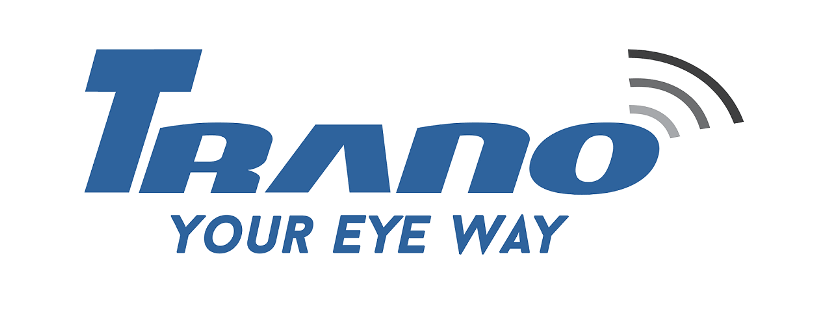Description

Oomnitza

AssetWorks
Comprehensive Overview: Oomnitza vs AssetWorks
Oomnitza Overview
a) Primary Functions and Target Markets:
Oomnitza is a software platform that focuses on IT asset management, aiming to provide a comprehensive view of an organization’s technology assets. Its primary functions include:
- Automated asset management
- Endpoint lifecycle management
- IT process automation
- Workflow orchestration across different systems
Oomnitza targets mid-sized to large enterprises that require robust asset management solutions across diverse geographical and technological environments. It serves industries such as technology, finance, healthcare, and manufacturing.
b) Market Share and User Base:
Oomnitza, being a more specialized player in the IT asset management space, has carved out a niche among enterprises with complex IT environments. While not as large as traditional giants, it is favored for its flexibility and adaptability in advanced IT ecosystems. Exact market share figures are proprietary, but Oomnitza's SaaS model is growing in popularity among companies undergoing digital transformation.
c) Key Differentiating Factors:
- Comprehensive Integration: Oomnitza offers extensive integration capabilities with a wide variety of IT infrastructure and business systems, helping organizations unify their asset management processes.
- Emphasis on Automation: The platform is heavily automation-focused, reducing manual workload and improving efficiency through a customizable workflow engine.
- Enterprise Scalability: It is designed to support scaling in large and complex IT environments efficiently.
AssetWorks Overview
a) Primary Functions and Target Markets:
AssetWorks offers a broader range of asset management solutions that extend beyond IT to include infrastructure and facilities management. Its key functions include:
- Fixed asset management
- Fleet and equipment management
- Facilities management
- Property and infrastructure valuation
AssetWorks targets a diverse range of industries, including government, education, transportation, and utilities. It is particularly strong in public sector markets and organizations with large operational and physical infrastructures.
b) Market Share and User Base:
AssetWorks is a well-established player in asset management, especially in the public sector and education markets. It boasts a significant user base in North America, where it is often the go-to solution for municipalities and educational institutions managing extensive and diverse resources. Detailed market share data are typically not published, but the company's strong domain expertise gives it a significant foothold in its target markets.
c) Key Differentiating Factors:
- Diverse Asset Management: While it does cover IT, AssetWorks is notable for its capabilities in managing non-IT assets such as fleets and physical facilities, offering a holistic resource management suite.
- Strong Public Sector Footprint: AssetWorks has specialized solutions tailored for public sector requirements, making it a preferred choice for government entities.
- Comprehensive Reporting and Compliance: The platform provides detailed reporting and compliance capabilities, crucial for sectors with regulatory requirements like transportation and government.
Comparison Summary
- Core Focus vs. Broad Scope: Oomnitza primarily focuses on IT asset management and automation, while AssetWorks provides a broader range of asset management solutions, including non-IT assets.
- Target Markets: Oomnitza appeals to enterprises with complex IT systems, whereas AssetWorks targets a wide audience including the public sector and education.
- Integration and Automation: Oomnitza excels in integration and automation tailored for digital transformation, while AssetWorks is favored for managing diverse physical and IT infrastructures with strong regulatory reporting.
In conclusion, the choice between Oomnitza and AssetWorks heavily depends on the type of assets managed and the specific industry needs. Oomnitza is more suitable for tech-focused enterprises, whereas AssetWorks is ideal for organizations with a broader range of asset management requirements, especially in the public sector.
Contact Info

Year founded :
2012
+1 866-985-0557
Not Available
United States
http://www.linkedin.com/company/oomnitza

Year founded :
2012
Not Available
Not Available
Netherlands
http://www.linkedin.com/company/assetworks
Feature Similarity Breakdown: Oomnitza, AssetWorks
When comparing Oomnitza and AssetWorks, both of which are asset management platforms, there are several aspects to consider including their core features, user interfaces, and unique attributes that differentiate one from the other.
a) Core Features in Common:
-
Asset Tracking and Management: Both platforms offer robust tools for tracking and managing physical and digital assets. This includes capturing asset data, tracking lifecycle, and monitoring usage.
-
Inventory Management: They provide inventory management functions that help businesses keep track of stock levels and movements.
-
Reporting and Analytics: Both platforms come with reporting and analytics capabilities to help businesses make data-driven decisions. Users can customize reports to suit their needs.
-
Integration Capabilities: Oomnitza and AssetWorks offer integration features with other enterprise systems such as ERP, CRM, and HR management systems to streamline business processes.
-
Compliance Management: Each platform supports compliance with industry regulations and internal policies, often with audit trails and documentation features.
-
User Permissions and Role-Based Access: Both platforms include security features that allow administrators to set permissions and define roles for users.
b) User Interface Comparisons:
-
Oomnitza:
- Focuses on simplicity and ease-of-use with a clean and intuitive interface that is designed to be user-friendly for non-technical users.
- Offers dashboards that provide quick insights into asset metrics and statuses, with customization options for different user roles.
- Known for its modern and streamlined design that emphasizes workflow automation.
-
AssetWorks:
- Provides a more traditional interface that is feature-rich but may have a steeper learning curve, particularly for new users or those less familiar with technology.
- Emphasizes detailed data entry and management, which can be more comprehensive for users needing in-depth asset detail and interaction.
- Dashboards may require more customization to match the ease of use found in Oomnitza’s visuals.
c) Unique Features:
-
Oomnitza:
- Workflow Automation: Offers advanced automation capabilities that enable users to create and manage workflows, reducing manual intervention.
- Digital Asset Management: Extends beyond physical asset tracking to include digital asset optimization and management.
- Mobile Accessibility: Provides strong support for mobile devices, allowing users to manage assets remotely and on-the-go.
-
AssetWorks:
- Fleet Management: Offers specialized modules for fleet management, making it ideal for organizations that need to track and manage a fleet of vehicles.
- Facility Management: Includes detailed functionalities for managing physical spaces and facilities, integrating asset management with space planning and maintenance.
- Customizable Modules: Provides highly customizable modules for specific industries such as education or government, allowing users to tailor the system to specialized needs.
Each platform has its strengths and is tailored for different organizational needs. Oomnitza excels in environments needing modern interfaces and automation, while AssetWorks is strong in traditional asset-intensive industries requiring detailed data management and industry-specific modules.
Features

Not Available

Not Available
Best Fit Use Cases: Oomnitza, AssetWorks
Oomnitza and AssetWorks are both asset management solutions, but they cater to different use cases and business needs depending on their features and capabilities. Here’s how they fit into different scenarios and industry verticals:
Oomnitza
a) Best Fit Use Cases:
- Technology-Driven Businesses: Oomnitza is particularly well-suited for companies in the technology sector, including IT departments or organizations that deploy a large number of tech assets and need to manage them effectively. This includes hardware, software, and other IT-related assets.
- High-Growth Companies: Firms experiencing rapid growth and scaling, requiring tools that can dynamically accommodate an increasing number of assets without significant changes in platform structure.
- Businesses Needing Robust Integrations: Companies that rely on a variety of enterprise systems and need a solution that can seamlessly integrate with existing tools like IT service management (ITSM), ERP, and procurement systems. Oomnitza’s strong API and integration capabilities make it an ideal choice here.
- Organizations Focused on Compliance: Businesses needing detailed asset lifecycle management for compliance and audit purposes might find Oomnitza’s features beneficial, especially within sectors like finance or healthcare where audit trails and compliance are critical.
d) Industry Verticals and Company Sizes:
- Industry Verticals: Technology, Healthcare, Finance, and any industry with a significant focus on IT assets.
- Company Sizes: Medium to large enterprises that require robust asset management features to handle complex asset environments and workflows.
AssetWorks
b) Preferred Use Scenarios:
- Public Sector and Education: AssetWorks excels in scenarios where asset management needs extend beyond IT and into areas like fleet, facilities, and wider enterprise asset management. Public sector entities, such as municipalities and educational institutions, often find its capabilities align well with their needs.
- Transportation and Fleet Management: Organizations with large fleets or transportation networks might find AssetWorks’ specialized fleet and facilities management tools more comprehensive and tailored than more generic solutions.
- Manufacturing and Facility Management: Companies with significant property holdings, facilities, or machinery need tools to deal with ongoing operational demands across diverse asset categories.
- Energy and Utilities: Asset-intensive industries like energy companies require comprehensive tracking and maintenance scheduling capabilities, which AssetWorks supports effectively.
d) Industry Verticals and Company Sizes:
- Industry Verticals: Public Sector, Education, Transportation, Manufacturing, Energy, and Utilities.
- Company Sizes: Typically preferred by larger organizations or public sector entities with diverse asset tracking needs, including non-IT assets like vehicles and facilities.
Conclusion
In summary, Oomnitza is favored by tech-driven businesses and those requiring advanced IT asset management features, while AssetWorks is more appropriate for organizations needing broader asset management capabilities, including fleet and facilities management, often found in the public sector or asset-intensive industries. Each caters to different company sizes and industry needs based on their core functionalities and integration capabilities.
Pricing

Pricing Not Available

Pricing Not Available
Metrics History
Metrics History
Comparing teamSize across companies
Conclusion & Final Verdict: Oomnitza vs AssetWorks
To provide a well-rounded conclusion and final verdict for Oomnitza and AssetWorks, let's evaluate each solution based on their features, cost-effectiveness, suitability for specific use cases, and user feedback.
a) Best Overall Value
Oomnitza and AssetWorks both cater to asset management needs but differ in focus and application. Determining the best overall value depends largely on organizational requirements:
-
Oomnitza is particularly strong in IT asset management and excels when integrated with various IT systems. It offers robust capabilities in lifecycle management, automation, and integration with numerous platforms, making it valuable for tech-driven environments that require agile and comprehensive IT asset oversight.
-
AssetWorks is known for its versatility and is typically favored by organizations that require integrated solutions beyond IT, including fleet management and facilities management. It offers comprehensive modules for varied assets, making it an ideal choice for companies with diverse asset management requirements beyond IT.
Verdict: If IT asset management is your primary need, Oomnitza offers better overall value. However, for multi-faceted asset management needs, AssetWorks provides greater value due to its wider scope.
b) Pros and Cons
Oomnitza:
- Pros:
- Excellent integration capabilities with a wide range of IT tools and platforms.
- User-friendly interface that is intuitive and easy to navigate.
- Strong lifecycle management features and automation options.
- Scalable and adaptable to different sizes of organizations in tech-heavy sectors.
- Cons:
- Limited focus outside of IT assets.
- Higher learning curve for users unfamiliar with IT-focused asset management platforms.
- May have a higher cost if only basic asset management is required.
AssetWorks:
- Pros:
- Broad asset management capabilities covering IT, fleet, facilities, and more.
- Highly customizable modules to suit specific organizational needs.
- Good reputation in sectors like government, education, and transport where diverse asset management is crucial.
- Cons:
- Complex implementation process for organizations not requiring comprehensive asset oversight.
- Potentially overwhelming for businesses only looking for IT asset management.
- Higher initial implementation costs due to its extensive features.
c) Recommendations
For users trying to decide between Oomnitza and AssetWorks, here are some recommendations:
-
Assess Needs: Clearly identify your asset management needs. If IT asset management is the core requirement, Oomnitza is likely more suitable. If you require management of multiple asset types, including fleet and facilities, consider AssetWorks.
-
Budget Considerations: Evaluate your budget against the offerings of each product. Oomnitza might incur costs primarily for IT assets, while AssetWorks could involve higher costs due to its broader capacities but can result in savings by consolidating multiple tools.
-
Implementation and Support: Consider the implementation resources at your disposal. If you prefer a streamlined, less resource-intensive setup, Oomnitza may be easier to deploy. For complex, large-scale implementations where support and customization are paramount, AssetWorks might be more beneficial.
-
Scalability and Future Needs: Think about long-term needs as your organization grows. Choose a platform that not only meets current demands but is also scalable to future-proof your asset management strategy.
Ultimately, both platforms have distinct advantages and can bring considerable value to organizations when aligned with specific asset management goals.
Add to compare
Add similar companies




